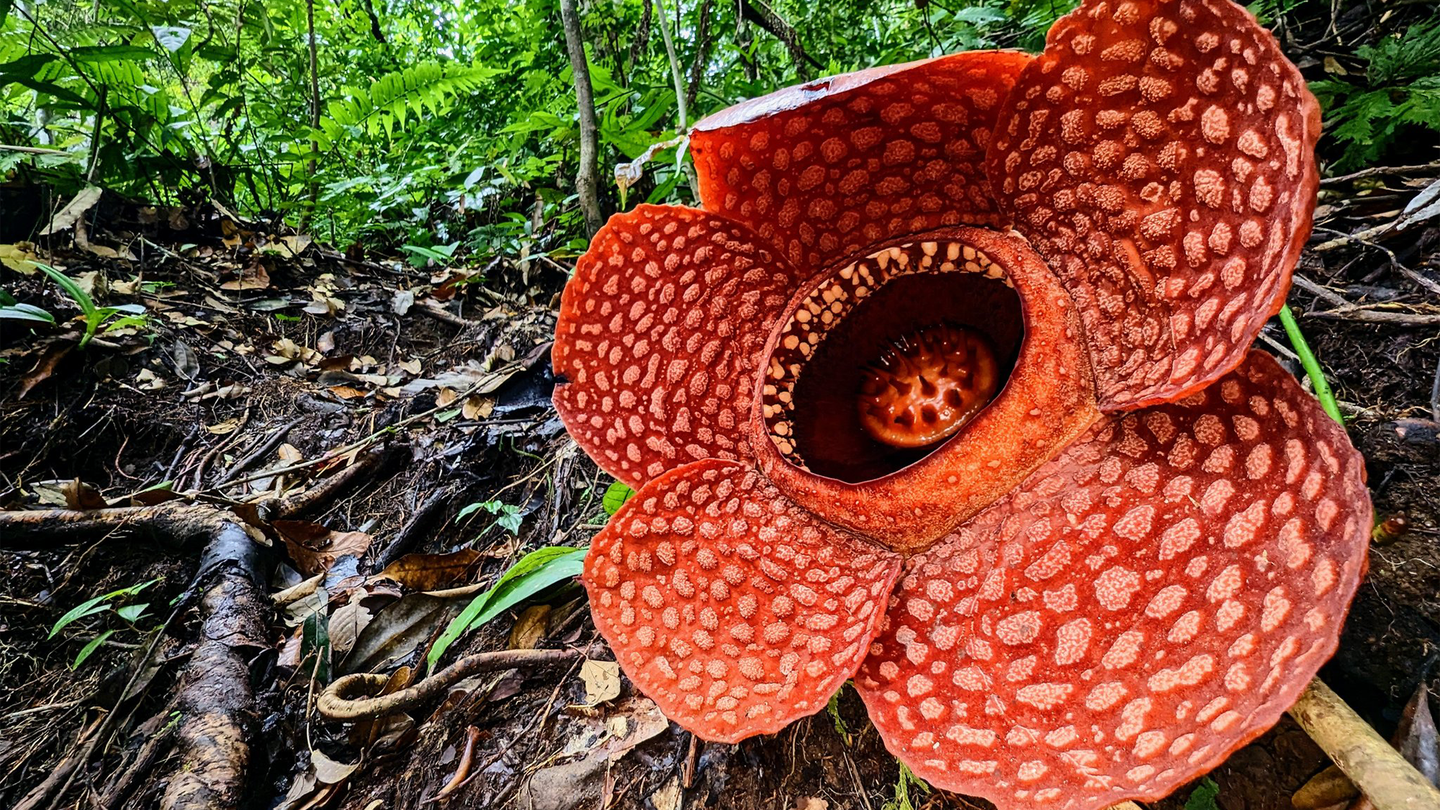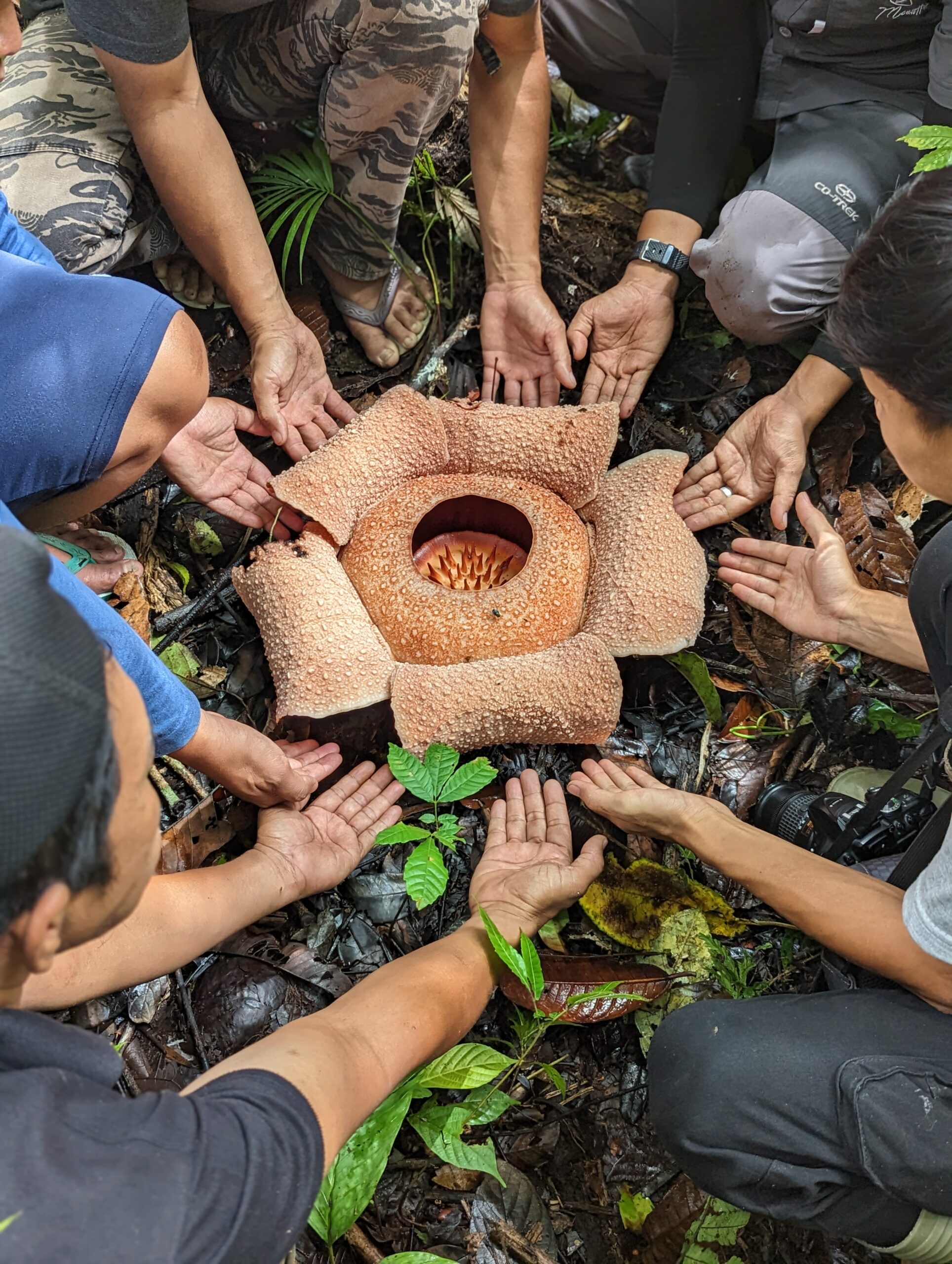
As their giant petals open, the blooming of flowers in the genus Rafflesia brings with them an overwhelming odor mimics the smell of rotting flesh. While their pungent stink might keep humans away and attract flies, a study published September 19 in the journal Plants People Planet found that 67 percent of the habitats for these notorious plants is at risk of destruction.
[Related: Corpse flowers across the country are swapping pollen to stay stinky.]
Rafflesia are the largest flowers in the world and have been a botanical enigma for centuries. In addition to their infamous stink, corpse flowers are actually a parasite that infects vines in the tropical jungles of Thailand, Indonesia, Malaysia, Brunei, and the Philippines. It remains hidden from sight for the majority of its lifecycle, existing as a system of tiny thread-like filaments that invades its host. At unpredictable intervals, the parasite produces a cabbage-like bud that will break through a vine’s bark and eventually form a giant, five-lobed flower, up to 3.2 feet across. The flower produces its signature rotten meat smell to attract pollinating flies.
This elusive lifecycle and ability to remain hidden makes them very poorly understood by botanists, and new species are still being discovered by botanists. With such an elusive lifecycle, Rafflesia remains poorly understood, and new species are still being recorded.
In the study, an international group of researchers established the first coordinated global network to assess the threats facing Rafflesia. This network found most of the 42 known species of Rafflesia are severely threatened, but only one is listed on the IUCN’s Red List of Threatened Species. This leaves many unprotected by regional or national conservation strategies. The scientists classified 25 species as Critically Endangered and 15 as Endangered, according to the IUCN’s criteria for classification.

Chris Thorogood of the University of Oxford Botanic Garden in England co-authored the study and an upcoming book on the team’s years devoted to documenting these plants. In a statement, Thorogood said that this work, “Highlights how the global conservation efforts geared towards plants–however iconic–have lagged behind those of animals. We urgently need a joined-up, cross-regional approach to save some of the world’s most remarkable flowers, most of which are now on the brink of being lost.”
Additionally, Rafflesia species often have very restricted geographical distributions, making them particularly vulnerable to habitat destruction. Many of the remaining populations of corpse flowers have only a few individuals in unprotected areas that are at risk of being converted for agricultural use, according to the study. While these and other similarly smelly flowers famously exist in some botanical gardens, these institutions have had limited success in breeding them, making habitat conservation an urgent priority.
[Related: These parasitic plants force their victims to make them dinner.]
The four-point action plan proposed by the team for local governments, research centers, and conservation organizations includes greater habitat protections, better understanding of the full diversity of the Rafflesia that exists to better inform policy making, developing better methods to breed them outside their native habitat, and introducing new ecotourism initiatives to engage local communities in Rafflesia conservation.
The study also highlighted some valuable success stories that may offer important insights for Rafflesia conservation elsewhere, including the Bogor Botanic Garden in West Java, Indonesia, that saw a series of successful blooming events and villagers in West Sumatra benefitting from Rafflesia ecotourism by forming “pokdarwis” or tourism awareness groups linked to social media.
“Indigenous peoples are some of the best guardians of our forests, and Rafflesia conservation programmes are far more likely to be successful if they engage local communities,” Adriane Tobias, a study co-author and forester from the University of the Philippines Los Baños, said in a statement. “Rafflesia has the potential to be a new icon for conservation in the Asian tropics.”
The post Earth’s stinkiest flower is threatened with extinction appeared first on Popular Science.
Articles may contain affiliate links which enable us to share in the revenue of any purchases made.
from | Popular Science https://ift.tt/LV4bGwr



0 Comments